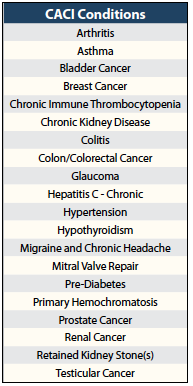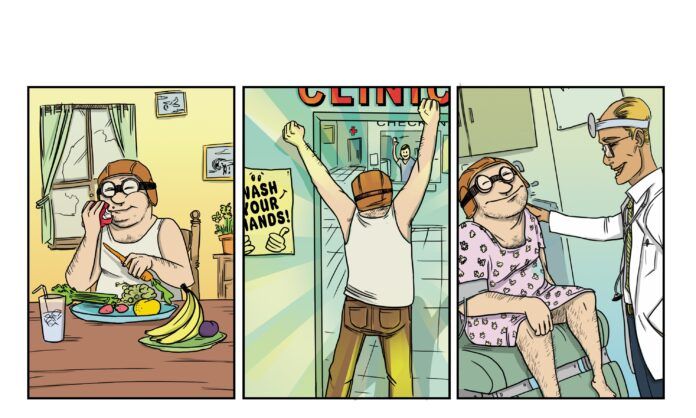FAA’s Office of Aerospace Medicine (AAM) in Washington, D.C., led by Dr. Susan Northrup, the Federal Air Surgeon, has jurisdiction over CAMI. The divisions of CAMI we care most about are Aerospace Medical Certification (AMCD), Medical Specialties, and the nine Regional Flight Surgeons (RFS), who can issue or deny most medicals. They can help resolve certificate issues, and you’re free to call them directly if you wish. All these levels mean interesting processes.
You and Your AME
We mainly interact with the 3000-odd CAMI-trained Aviation Medical Examiners (AME) who report to AMCD. Over 95 percent of applicants are issued medicals on the spot. AAM is committed to finding one of the several ways to say “yes” for every qualified applicant.
Medical standards and certification procedures are published in 14 CFR Part 67. AAM implements them. You might find solace in reading its pertinent sections to know what to expect before your appointment.
During your visit, you might fall within the purview of conditions an AME can issue, or CACI. CACI (pronounced “khaki”) defers specific decision-making to the AME. Twenty current CACIs appear in the table, and Dr. Northrup says they’re looking to add two more. If all else is good, you’ll leave with a medical.
The World of Waivers
If the AME encounters a disqualifying condition, it doesn’t mean game over. There are fifteen conditions for which an AME cannot issue a medical. They will typically won’t deny, but will defer your application to the RFS or AMCD. Even denials aren’t always permanent.
Welcome to the world of waivers—first, the Special Issuance, which the FAA can issue under §67.401. Over 34,000 pilots hold Special Issuances. I’m one of them.
AMCD is neither arbitrary nor adversarial. Everything AMCD does is rooted in objectivity to the extent possible, but as Dr. Northrup notes, “there are gray areas in medicine without a doubt.” If you meet their criteria, AMCD will approve your medical.
The Special Issuance process can test your patience and be maddeningly detailed. They take their job of protecting our airspace very seriously. AMCD reviews about 385,000 pilot medical applications yearly. Take heart in that only about 350-400 are permanently denied.
How Special Issuances Work
Speaking of hearts, let’s say a pilot had a myocardial infarction, a heart attack. The pilot is immediately disqualified from flying under §61.53, Prohibitions on Operation During Medical Deficiency, because a myocardial infarction immediately makes the person unable to meet the requirements of any medical certificate.
There’s no mandatory wait time to apply for a Third Class Special Issuance, but the AME may prefer the pilot wait for their condition to stabilize fully. Second and First Class applicants must wait three months, but caveats attached to the First Class can extend theirs to six months.
The AME performs the necessary tests for the desired medical class, then defers the application to AMCD. They respond with a list of tests the pilot must take; a maximal stress echocardiogram test with full ECG, blood work, a cardiologist’s assessment, and the like. The details are spelled out in the letter and must be met thoroughly and precisely, or the application will bounce. The pilot has only 60 days to respond. If the criteria are met and the applicant is otherwise qualified, the pilot receives a Special Issuance medical, typically for one year.
In subsequent years, the pilot can use AME Assisted Special Issuance or AASI. The pilot gets the necessary testing done and can send it directly to AMCD, preferably after an AME looks it over. They can assure the paperwork is entirely responsive, readable, correctly signed, and raises no red medical flags. Mail the paperwork yourself with a return receipt.
Pilots who know the drill (like me) can send their paperwork directly to AMCD, writing all FAA reference numbers on each page. They keep copies of everything sent. Better yet, they scan each page into their computer, year over year. AMCD is notorious for losing paperwork.
The FAA might require a CD or DVD of an imaging scan, which AMCD can request in a particular, usually standard, format. Mark the disc with name and reference numbers. AMCD will return it.
The purpose of all this folderol is to help AMCD avoid requesting more information that further delays the application. If asked for additional information, provide it promptly and by fax, if able. Amazingly, most denials are administrative—when a pilot doesn’t respond within 90 days. Should the pilot later respond the process restarts.
Once AMCD is satisfied, they write the pilot a letter authorizing the AME to issue a medical certificate if otherwise qualified and copy the AME. That letter will make any pilot’s day as it results in a fresh medical certificate.
Angst over Special Issuances
There is much consternation over Special Issuances. The form letter was written in the first person, ice-cold and full of blunt legalese before it got around to saying you got your waiver. Dr. Northrup says they toned down the thirteen most threatening ones (“I did more stress tests on these letters than any doctor in the country.”) but added the pilot must obey the “mumbo jumbo” legalese. It’s mind-boggling to think they had so many.
Between inefficient handling and COVID-19, processing takes months. Soon after Dr. Northrup took office in January 2021, she promised to beat the wait time for Special Issuances down to 60 days, but years will pass before it happens, if ever.
Another frustration with applications is that the process is largely opaque. In November 2021, she promised, “another thing that should be coming in the next six to nine months is you’ll be able to see where your medical is in our system.” That will be a vast improvement.
Care for a SODA?
The same regulation defines the other type of waiver—a Statement of Demonstrated Ability or SODA. The FAA issues a SODA for a static or nonprogressive disqualifying condition.
Perhaps you fail the color blindness test. You can request a SODA by demonstrating to an aviation safety inspector you recognize the color of light gun signals from the tower. AMCD issues SODAs to pilots with one eye, missing limbs, and the like. They don’t expire and can be issued for any class of medical certificate.
BasicMed
 Detailed in Part 68, some 66,000 pilots abbreviate the FAA bureaucracy. If you hold a Special Issuance, you no longer must report anything to the FAA. Statistics show no significant accident difference between BasicMed and Third Class certificate holders, but insurance companies may insist on a Third Class. Save all paperwork and continue all periodic medical examinations.
Detailed in Part 68, some 66,000 pilots abbreviate the FAA bureaucracy. If you hold a Special Issuance, you no longer must report anything to the FAA. Statistics show no significant accident difference between BasicMed and Third Class certificate holders, but insurance companies may insist on a Third Class. Save all paperwork and continue all periodic medical examinations.
Parting Words
Dr. Northrup and her husband own a Canadian T-6 Harvard. At a warbird conference, she asked Missouri Senator Sam Graves, who owns a T-6 Texan, how Congress arrived at the 6000-pound BasicMed weight limit, and she recounted his response.
“Laughing, he said, ‘I sent my staffer down to see how much my airplane weighed,’ which is five thousand nine hundred and some odd pounds. Yeah, six thousand, okay, nice. Isn’t it great how our legislation gets written?” If you mean BasicMed, it sure is.
Fred Simonds, CFII, thanks Gary Crump, Director of AOPA’s Pilot Information Center Medical Certification Section, for his able assistance in preparing this article.





